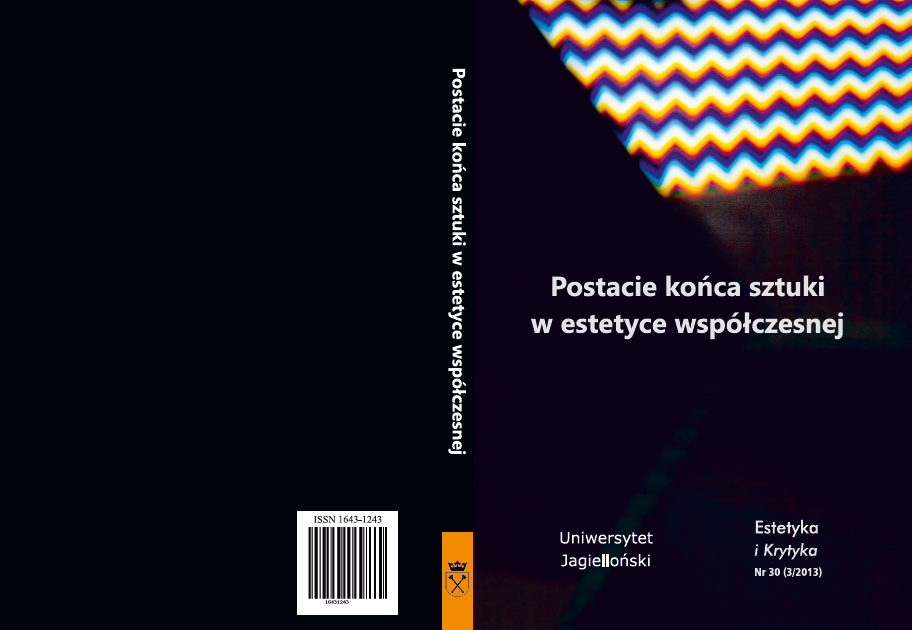Diagnozy i prognozy sztuki: Witkacy i postmoderniści (między innymi)
Diagnoses and Forecasts of Art:
Hegel, Witkacy, Postmodernists and Others
Author(s): Józef TarnowskiSubject(s): Philosophy, Aesthetics
Published by: Wydawnictwo Uniwersytetu Jagiellońskiego
Summary/Abstract: Hegel made three visions of future art. According to the first one, spirit first expresses itself in art, then in religion and finally in philosophy. Thus, the birth of religion means the death of art, and the birth of philosophy means the death of religion. According to the second vision, art is symbolic in the beginning, then it is classical, and in the end, it is romantic, that is Christian. Hence, art never dies. According to the third vision, a brand new epoch is emerging, in which modern art rejects tradition. For modern artists, artistic means are artistic aims. A modern work of art is no longer a vehicle for ideas, its aim is to show the artist’s personality. The future of the new expressionist art is safe. Hegel’s followers were inspired by his first and third visions. So called Real Idealists, shared Hegel’s first vision, but they reinterpreted the original pan-spiritual vision in terms of Christian theism. Józef Kremer, who was Hegel’s pupil, and Henryk Struve, both Polish philosophers and aestheticians, were among them. Eugène Véron adopted the third, expressionist, vision. Witkacy, Polish artist and aesthetician, combined both visions, but interpreted them in a speculative, materialistic and psychological way. In his opinion, art was in its ‘death throes’, because, on the one hand the repertoire of artistic forms had been depleted, and on the other hand human “metaphysical sensuality” had disappeared. His first argument was fundamental of the postmodern self-consciousness of art fifty years later.
Journal: Estetyka i Krytyka
- Issue Year: 30/2013
- Issue No: 3
- Page Range: 145-155
- Page Count: 11
- Language: Polish

